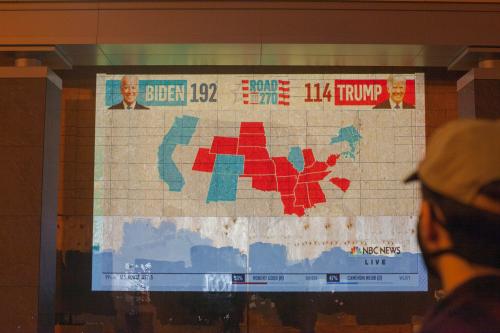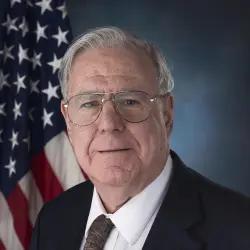This piece originally appeared in the Washington Post on January 29, 2019.
Every day seems to bring news that one or two more Democrats are seeking their party’s nomination for president. The count is nearing or above 10, depending on whether one counts those with exploratory committees in the total. An additional 40 or so are listed by Ballotpedia as “‘potential” candidates. Not all will run, but even so, primary and caucus races may contain a score or more candidates.
Paradoxically, this flowering of Democratic enthusiasm to eject a detested incumbent from the White House may undermine the effort to do so. The problem is the juxtaposition of what promises to be massive candidate field and delegate-selection rules adopted long ago by the Democratic National Committee. It is too late for the DNC to change those rules. But states can solve the problem on their own.
The DNC set rules decades ago to discourage fringe candidates from remaining in the race and to reduce the power of large states to dominate candidate selection. It did so by authorizing several small states to hold primaries or caucuses early and by requiring a form of proportional representation when translating votes into pledged delegates. The rules also require a candidate to win 15 percent of the primary or caucus vote in each of the state’s congressional districts to get any pledged delegates at all in that district.
For example, assume there are 10 candidates, two of whom receive 30 percent and 20 percent of the vote, respectively, while none of the other eight candidates receives as much as 15 percent of the vote. In that situation, the top two vote-getters would receive 60 percent and 40 percent of the pledged delegates, and no other candidate would receive any.
These rules work well — ordinarily. But, when applied to the large candidate field looming for 2020, they carry two dangers. First, no candidate may win 15 percent of the vote. If that happens, the threshold for receiving any pledged delegates drops to half of the vote share of the leading candidate. The second and much more serious risk is that only one candidate narrowly clears the 15 percent threshold. Under the DNC rules, that candidate would win all of a district’s pledged delegates, even though 85 percent or more of the Democratic electorate preferred someone else.
The latter possibility is particularly troubling given the scheduling of Democratic primaries in 2020. Fifty-four percent of all pledged delegates will be chosen in the first five weeks of the primary season, mostly from four states — California, Texas, Ohio, and Michigan. An additional 10 percent of pledged delegates will be chosen one week later — nearly all from Florida and Illinois. One candidate with a big lead in name recognition or with a small band of intense supporters could wrap up the Democratic nomination based on the votes of a tiny share of voters and do so before primary voters have had much time to get acquainted with the candidates.
Neither of these contingencies may materialize. One broadly popular candidate may dominate the earliest primaries and emerge as the party’s clear favorite. Unable to raise funds to continue campaigning, so many candidates may drop out that there is no risk of an undemocratic Democratic outcome on Super Tuesday. But why take the chance? Why not eliminate the possibility that a candidate could win the Democratic nomination in a quite undemocratic manner?
While it is too late for the DNC to change how delegates are assigned, each state could allow voters to express approval for two or more candidates, with the exact number depending on the size of the field. For example, if there are, say, eight to 10 candidates, voters could be authorized to indicate approval of two; if 11 to 13, three; if 14 to 16, four, and so on if the candidate roster is even longer. From there on, current DNC rules would apply. Any candidate approved by 15 percent of voters would be eligible for pledged delegates, and proportional representation would apply. The possibility that no candidate would win approval of fewer than 15 percent of voters would be eliminated. And the likelihood that only one candidate with approval of barely more than 15 percent of the electorate would win all of a state’s pledged delegates would become infinitesimal.
Many solutions to the too-many-candidates problem exist. Some, like ranked-choice voting, which requires voters to indicate their order of preference among all candidates, are bewildering and difficult for vote counters to manage. In contrast, asking voters simply to indicate approval for two or more candidates from a roster is easy to understand. It is commonly used when two or more seats are to be filled from a single list of candidates. And it does not change vote-counting procedures. Any state, acting on its own, can put such a voting rule into effect. Were enough states to do so, the chances of following a genuinely democratic process for selecting the Democratic Party’s nominee would be greatly enhanced.
The Brookings Institution is committed to quality, independence, and impact.
We are supported by a diverse array of funders. In line with our values and policies, each Brookings publication represents the sole views of its author(s).






Commentary
Democrats must act now to avoid an undemocratic 2020 outcome
February 4, 2019